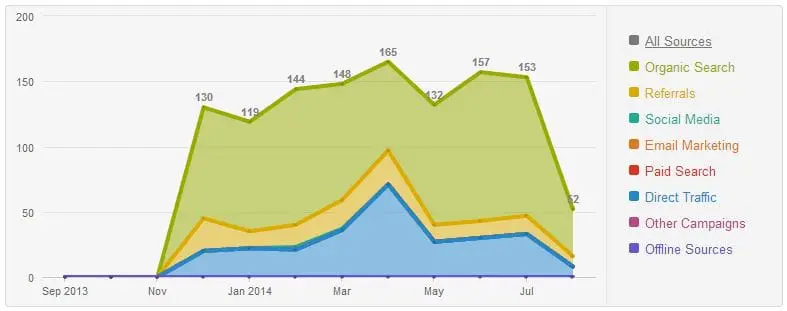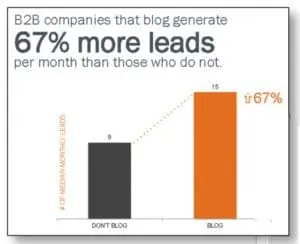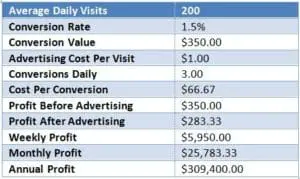 Measuring your business blogging effectiveness can be a great way to identify ways to improve its performance. If the primary goal of your business blog is to generate leads, for example, you’ll want to gauge how well it’s generating leads today and discover which articles and specific tactics are particularly working toward achieving that goal.
Measuring your business blogging effectiveness can be a great way to identify ways to improve its performance. If the primary goal of your business blog is to generate leads, for example, you’ll want to gauge how well it’s generating leads today and discover which articles and specific tactics are particularly working toward achieving that goal.
Once you can identify the key factors that make your blog successful, you can incorporate more of those tactics into future blog posts to improve your blog’s overall performance. Here’s what you should be measuring.
1. Blog traffic and referral sources
Knowing where your blog traffic is coming from and how much traffic can be attributed to individual sources can reveal valuable insights into how effective you are at promoting your blog content in certain channels. Is most of your traffic coming from organic search? If so, you’re likely doing a great job of optimizing your content with the right keywords for search engines.
 Also think about the time lag between when you publish and when you start getting traction from the blog post. The post highlighted in the graph above was posted in March 2013, got no traction until November (seven months later!), and has been a steady performer ever since. Notice that most of the traffic is from organic search.
Also think about the time lag between when you publish and when you start getting traction from the blog post. The post highlighted in the graph above was posted in March 2013, got no traction until November (seven months later!), and has been a steady performer ever since. Notice that most of the traffic is from organic search.
If you’re doing well with organic traffic, as in the post above, are you lacking in social media traffic? Then you might want to put more effort into promoting your content in social media or increasing your social reach so more people can find and share your content in those channels. Consider from which sources you’re lacking in traffic, and double down on generating more exposure for your blog there.
2. Individual post views
Look at the number of views each blog post gets and use this data to identify trends in which articles are more popular than others. Over time, try to notice commonalities and patterns in the data. Perhaps you’ll find that using actionable blog titles that contain numbers generate more views than others. Or maybe blog posts on a particular topic resonate better with your blog’s target audience than other topics. Make a list of some of the top lessons you’ve learned from your blog analytics, and incorporate those tactics into more of your future blog articles.
Remember that newer posts might not have had as much chance to be noticed, so be sure to lean on historical data as much as you can.
3. Visitor-to-lead conversion rate
 If your goal is to generate leads with your blog, you not only want to know how many leads you’re generating, but also how effective you are at converting visitors into leads. If you start generating more traffic but your conversion rate is declining, you might want to focus more of your efforts on optimizing your blog for lead generation.
If your goal is to generate leads with your blog, you not only want to know how many leads you’re generating, but also how effective you are at converting visitors into leads. If you start generating more traffic but your conversion rate is declining, you might want to focus more of your efforts on optimizing your blog for lead generation.
Furthermore, if you’re generating the same amount of blog traffic but your conversion rates are increasing, this means you’re getting better at converting visitors into leads. While the ultimate goal is to increase traffic and your conversion rate so your leads increase, your blog’s conversion rate can be a great indicator of how effective your blog lead generation efforts are in general.
4. Call-to-action performance
How effective are your blog’s individual calls-to-action (CTA’s) at converting blog visitors into leads? Are you grabbing people’s attention?
Each and every one of your blog posts (as well as the sidebar of your blog itself) should include a CTA for an offer available behind a lead generation form. This is the main way a blog generates leads for your business.
That said, the best websites have more than one offer, and some offers likely perform better than others.
Consider this on your blog as well, and measure the performance of individual calls-to-action on your blog. If you find that some are better than others at converting visitors into leads, you might want to consider using them more frequently on your blog.
5. Blog leads
 How many leads can you attribute to your blog? This is one of the most important metrics to use in measuring your blog’s performance.
How many leads can you attribute to your blog? This is one of the most important metrics to use in measuring your blog’s performance.
While your conversion rates can be a good indicator of leads, at the end of the day, your manager will likely just be looking at your leads number. Creating a monthly leads goal and committing yourself to reaching that goal can be a great way to keep your blog on the right path.
If you’re not hitting your goals, consider how you can use your analytics to guide you back in the right direction. Perhaps you need to do more blog promotion to increase the traffic you generate. Or maybe you just need to get better at optimizing your blog content with more appropriate keywords to get better found in search. Maybe it’s a conversion problem. Use your blog analytics in tandem to diagnose your leads problem, and you’ll find it easier to identify problems and come up with solutions.
Your website is the hub of your digital marketing, but it’s not the whole story. Get the “Executive Guide to Inbound Marketing” to learn how to leverage your digital marketing efforts to produce real ROI.





